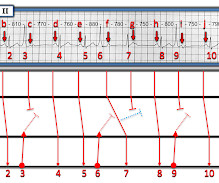A 60-year-old diabetic with chest pain, cath lab activated
Dr. Smith's ECG Blog
SEPTEMBER 15, 2023
I came to work one day and one of my partners said, "Hey, Steve, we had a STEMI this afternoon!" I said, "Cool, can I see the ECG?' Of course he said: "Yes, it was a 60 year old diabetic with Chest pain." So he showed me the ECG recorded in triage: What did I say? "That is not a STEMI. That is Arterial Pulse Tapping Artifact (APTA)." He said: "What?











Let's personalize your content